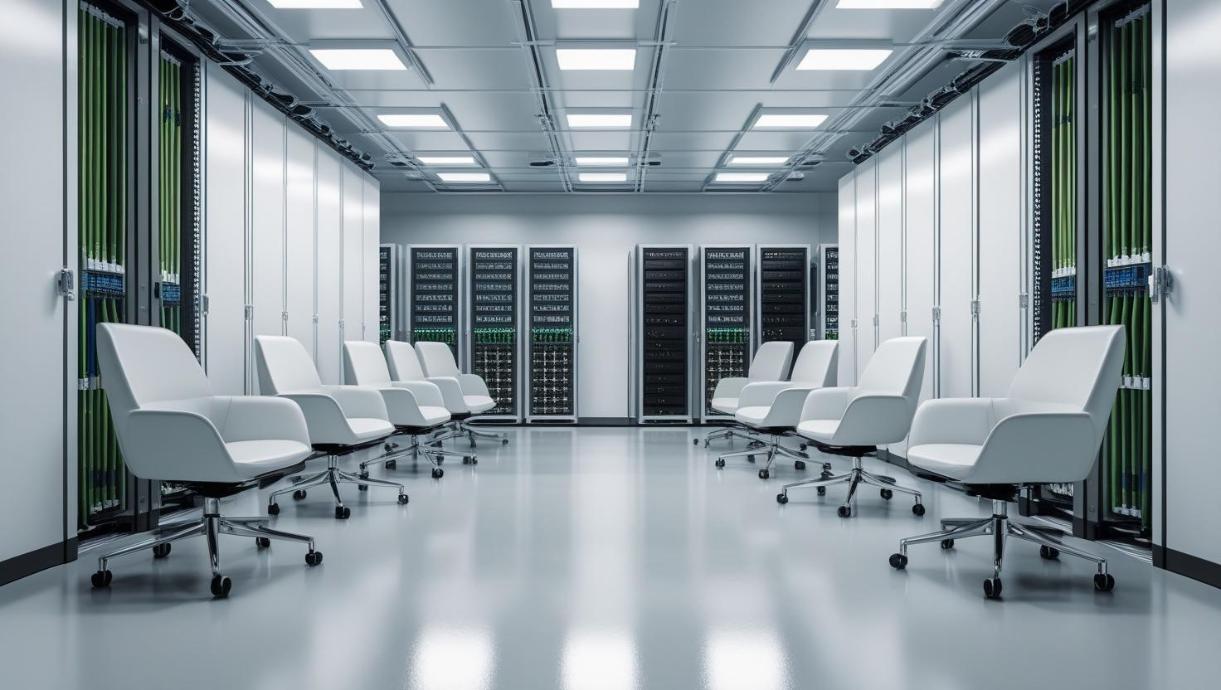
Data centers and server rooms designed for modern mission-critical computing prioritize precision cooling, redundant power, and rapid fault detection.
Yet an unexpectedly mundane concern—how deep cleaning furniture is—can influence those very systems. Emerging conversations among facility managers suggest that giving chairs and benches a thorough scrub may help keep electronics running smoothly.
Dust, Furniture, and Server Room Climate
The adverse effects of dust on servers are hardly debatable. Invisible fibers can block fan intakes, skew thermal readings, and ultimately raise temperatures—one of the quickest paths to early component failures.
For this reason, many teams regularly vacuum vents, wipe blades, and replace air filters, but a larger source of debris often escapes notice: the furniture seated nearby.
Office chairs, lounges, and even modest shelving beside a clean room slowly gather dust and shed flakes when people move. Once in the air, these particulates travel with return airflow, combine with fine magnetized dust, and settle onto various components.
The result is two main problems: the airflow gets disrupted early, and static charges, caused by too much tiny dirt, suddenly increase—both of which can harm delicate circuit boards.
Static Electricity and Upholstery Risks
Data centers often ignore static charge, but dusty upholstered chairs and sofas can accumulate a significant amount of it. If the fabric stays untouched for weeks, tiny dust particles rub against the fibers and build voltage that can jump as a visible spark.
While one flash is unlikely to wipe a server, repair tickets do pile up when sensitive ports silently corrode.
Giving upholstery a thorough deep clean removes that soft layer of grime, cuts the friction that makes sparks, and lets any anti-static coating do its job.
Once the chairs, lounges, and work-side cushions are treated, the chance of casual downtime shrinks, and staff may no longer need to follow the nerve-wracking habit of grounding themselves before touching racks.
ALSO READ: 8 Internet Technology Trends Revolutionizing the Future of EPL Coverage
Air Quality and Cooling Efficiency
After ensuring data integrity, the second unglamorous job in a server room is to keep the air fresh. Filters catch aging dust, yet dense clumps of fiber shed from stained upholstery sneak past and create their own thermal blanket.
What starts as benign fluff can push fans to run harder, waste kW tufts by tufts, and send equipment running warm enough for early failures.
A scheduled deep clean pulls out that hidden debris, opens up tighter flow corridors, and eases the HVAC workload within hours. When filters collect less oblong junk, they even last longer, knocking another curve off material costs.
The chain reaction of savings, quieter fans, and longer rack life often surprises managers, proving that a seat cushion deserves as much maintenance thought as a motherboard.
The Bigger Picture: A Preventive Maintenance Culture
Most operators don’t think about how scrubbed workstations might affect chip performance, yet clean furniture still supports larger upkeep goals.
When a facility extends rigorous hygiene to desks, racks, and carts, it cuts fugitive dust and microbial load system-wide. Tidy surfaces therefore help protect sensitive modules no less than high-grade filters and redundant coolers do.
Conclusion
In mission-critical centers, every detail influences circuit uptime. Neglect furniture, and heat vents may suddenly clog, stray discharge may spike, and airborne bios may settle on optics.
Therefore, scheduling a thorough cleaning of the furniture alongside belt-filter swaps provides a strategic advantage that ensures servers remain operational, effectively making cleanliness an ally to processing power.
